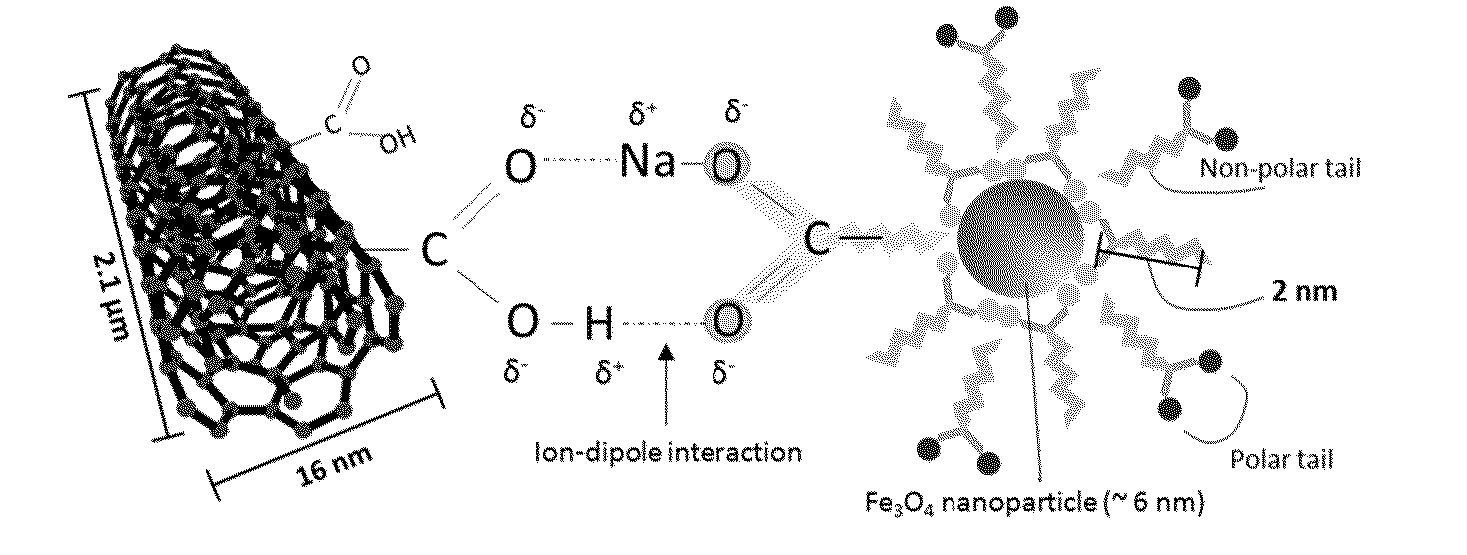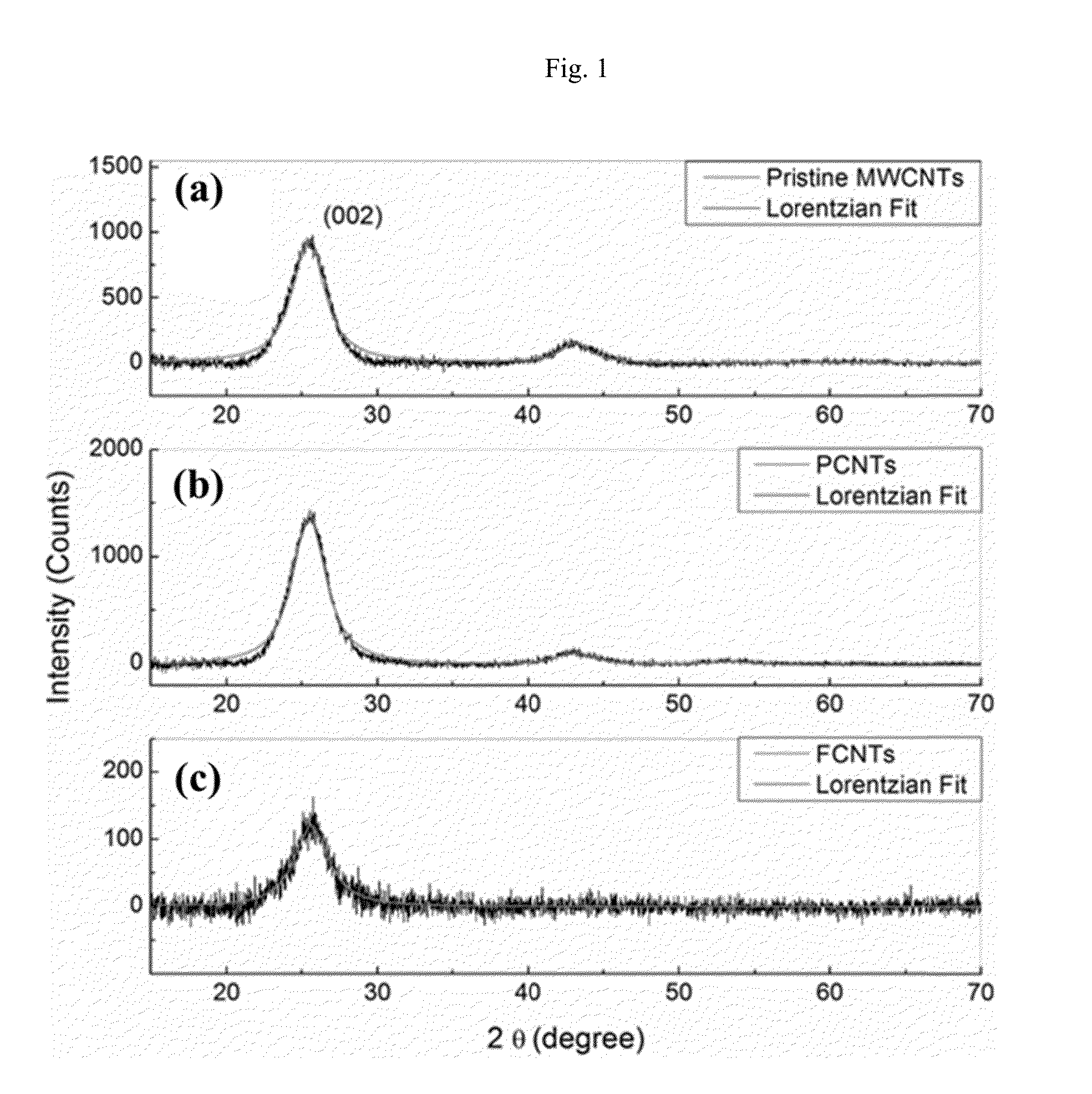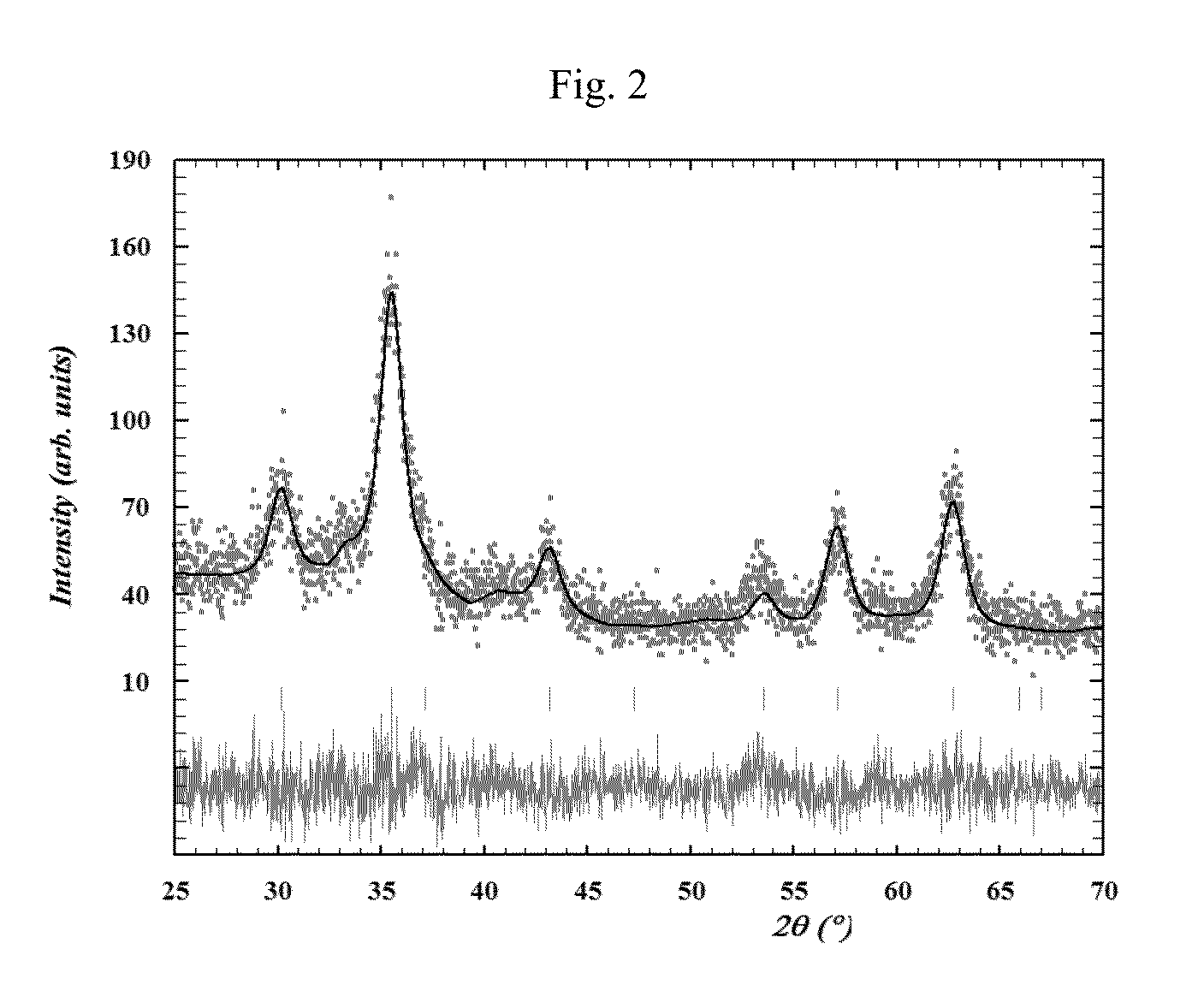Ferrofluid - mwcnt hybrid nanocomposite in liquid state
a carbon nanotube and hybrid technology, applied in the direction of magnetic liquids, ferroso-ferric oxides, magnetic bodies, etc., can solve the problems of inability to achieve uniform coating of cnts loaded with magnetic particles in dried state, and inability to control the orientation of cnts loaded with nano-magnetic particles
- Summary
- Abstract
- Description
- Claims
- Application Information
AI Technical Summary
Benefits of technology
Problems solved by technology
Method used
Image
Examples
example 1
[0057]Initially 0.03 g of as obtained MWCNTs were treated with 150 mL of 69% HNO3 and sonicated at 35 kHz for half an hour. Then it was followed by 180 min. magnetic stirring at room temperature i.e. 25° C. The mixture was filtered and washed with MilliQ water till pH reaches 6. The slurry was dried at 70° C. for 24 hours and labeled as PCNT. For chemical oxidation on side walls, some part of PCNT was taken in 200 mL of 69% HNO3 followed by sonication and then heating at 90° C. for 65 hours under constant stirring. After this second stage of acid treatment, the acid mixture containing functionalized carbon nanotubes (FCNTs) was allowed to cool down to room temperature and washed carefully by MilliQ water using two layers of Whatman filter paper (grade no. 42). The washing was continued with 3 liters of water till it pH reaches 6. The slurry was transferred to 350 mL of distilled water. It was found that the MWCNTs readily disperse in water without any further treatment. The dispersi...
example 2
[0059]Initially 0.03 g of as obtained MWCNTs were treated with 150 mL of 69% HNO3 and sonicated at 35 kHz for half an hour. Then it was followed by 180 min. magnetic stirring at room temperature i.e. 27° C. The mixture was filtered and washed with MilliQ water till pH reaches 6. The slurry was dried at 70° C. for 24 hours and labeled as PCNT. For chemical oxidation on side walls, some part of PCNT was taken in 200 mL of 69% HNO3 followed by sonication and then heating at 90° C. for 65 hours under constant stirring. After this second stage of acid treatment, the acid mixture containing functionalized nanotubes (FCNTs) was allowed to cool down to room temperature and washed carefully by MilliQ water using two layers of Whatman filter paper (grade no. 42). The washing was continued with 3 liters of water till it pH reaches 6. The slurry was transferred to 350 mL of distilled water. It was found that the MWCNTs readily disperse in water without any further treatment. The dispersion was ...
example 3
[0061]Initially 0.03 g of as obtained MWCNTs were treated with 150 mL of 69% HNO3 and sonicated at 35 kHz for half an hour. Then it was followed by 180 min. magnetic stirring at room temperature i.e. 30° C. The mixture was filtered and washed with MilliQ water till pH reaches 6. The slurry was dried at 70° C. for 24 hours and labeled as PCNT. For chemical oxidation on side walls, some part of PCNT was taken in 200 mL of 69% HNO3 followed by sonication and then heating at 90° C. for 65 hours under constant stirring. After this second stage of acid treatment, the acid mixture containing functionalized nanotubes (FCNTs) was allowed to cool down to room temperature and washed carefully by MilliQ water using two layers of Whatman filter paper (grade no. 42). The washing was continued with 3 liters of water till it pH reaches 6. The slurry was transferred to 350 mL of distilled water. It was found that the MWCNTs readily disperse in water without any further treatment. The dispersion was ...
PUM
| Property | Measurement | Unit |
|---|---|---|
| Temperature | aaaaa | aaaaa |
| Temperature | aaaaa | aaaaa |
| Temperature | aaaaa | aaaaa |
Abstract
Description
Claims
Application Information
 Login to View More
Login to View More - R&D
- Intellectual Property
- Life Sciences
- Materials
- Tech Scout
- Unparalleled Data Quality
- Higher Quality Content
- 60% Fewer Hallucinations
Browse by: Latest US Patents, China's latest patents, Technical Efficacy Thesaurus, Application Domain, Technology Topic, Popular Technical Reports.
© 2025 PatSnap. All rights reserved.Legal|Privacy policy|Modern Slavery Act Transparency Statement|Sitemap|About US| Contact US: help@patsnap.com



